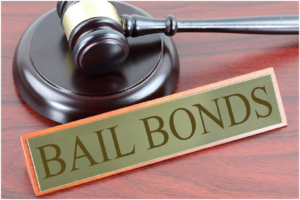Some Hard Money Lenders Avoid Fix-and-Flips – Here’s Why
3 min read
I have read my fair share of articles promoting hard money as an attractive funding source for fix-and-flip investors. Hard money certainly is one funding option. But while there are those lenders who welcome the opportunity to fund fix-and-flip projects, my understanding of the hard money industry is that most lenders avoid these types of deals.
Actium Partners is one such lender. Based in Salt Lake City, Actium Partners sticks with commercial real estate investments in Utah, Colorado, and Idaho. They would rather fund the acquisition of a warehouse or office complex than get into residential fix-and-flip projects.
Actium does acknowledge that there are some hard money lenders who don’t shy away from single family residential investments. But even at that, they are more likely to lend to investors looking to acquire rental properties. Lenders willing to invest in fix-and-flip projects simply aren’t the norm.
Houses Often Need Repairs
A big reason behind lender reluctance in the fix-and-flip market lies in the properties themselves. By their nature, fix-and-flip houses often need significant repairs. We’re not talking simple upgrades that make a property more inviting for resale. We’re talking about serious repairs to plumbing, electrical, flooring, etc.
It’s not the repairs themselves that lenders are worried about. It is the final cost of said repairs. It’s hard for an investor to truly know what they are going to spend until the work actually begins. Furthermore, running over the budget on repairs is not unusual. Both investors and lenders need to plan for it.
Repairs Take Time
Along with the cost of anticipated repairs is the time needed to get them done. Another way to put it is to say that repairs take time. Every day a fix-and-flip home is under renovation is another day it is not on the market. Moreover, the longer an investor takes to complete repairs, the lower his profit is likely to be.
The potential for lower profits puts a lender at risk. What if a lender funds both acquisition and repair but the property does not sell at a high enough price to turn a profit? Now the investor is stuck with an outstanding loan balance and not enough money to cover it.
Even when cost overruns and too much time don’t result in selling at a loss, an investor’s margin could still be considerably low. Low margins make the entire experience not worth everything put into it. The end result is that the borrower gets out of the fix-and-flip market and the lender loses a customer.
Short Term Price Flexibility
Perhaps the biggest concern of all is the short-term flexibility built into residential property markets. Although property almost always appreciates over time, short term flexibility puts a fix-and-flip investment at risk.
Some hard money lenders prefer to look at price flexibility as market instability. They know that fix-and-flip investors are working on tight time constraints. They also know how easy it is to fall behind when the market starts to slip even as an investor is still working on completing repairs.
There are no guarantees that a home purchased today will reach its estimated value six months from now. The market could fall out and kill a borrower’s investment. For many hard money lenders, the risk isn’t worth the reward.
Fortunately for fix-and-flip investors, there are hard money lenders willing to fund their acquisitions. But those lenders also charge higher rates and fees. There is a tradeoff for the risk involved. But given other options, fix-and-flip investors often choose hard money as their primary funding source for new properties.







